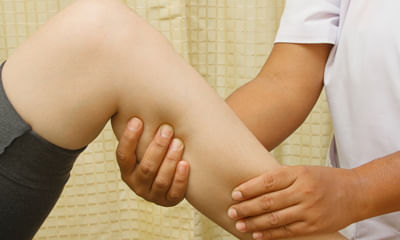Tips To Treat Of Bursitis!
What is bursitis?
It is a painful condition that affects many joints of the body.
Bursae are fluid filled sacs (cavities) found near the joints. They act as a cushion and contains a fluid which acts as a lubricant that reduces friction between. Together they help in easy movement of joints.
Sometimes because of some causes this bursa gets irritated and gets swollen (filled with extra fluid) putting pressure on nearby joint, the resultant condition is called bursitis.
Joints affected
Amongst the various joints of the body any one can get affected. Joints near which bursitis can be commonly found are- shoulder, elbow (tennis elbow, golfer’s elbow, student’s elbow), ankle, knee (clergyman knee, housemaid knee) and hips.
Risk factors
Common risk factors are:
Obesity: heavy weight puts much pressure on joints and surrounding areas.
Manual workers: repetitive strenuous physical exertion is one of the most important factors causing bursitis.
Athletes: those who are regularly engaged in some sort of physical exercises are also prone to get bursitis.
Causes and symptoms
Causes
Some of the main causes of bursitis are injury, overuse and infection.
Overuse: bursitis can also occur if the nearby structures has been overused (commonly by repetitive movements).
Injury: in cases of injury, tissues inside the bursa gets irritated causing pain and tenderness. It may occur by hard blow to affected area.
Infection: it can occur in bursae near skin by a cut as it gives access to bacterias to enter the bursa.
Other health condition: some underlying conditions (such as gout, rheumatoid arthritis or scleroderma) can cause crystal formations inside the bursa which ultimately causes bursitis.
Symptoms
Pain: which increases with joint movement, pressure and sometimes at night.
Tenderness of affected area
Swelling in surrounding area
Restriction of joint movement and ultimately complete loss of joint movement.
Area hot to touch: when underlying infection is present. It may also cause fever.
Complications
Untreated bursitis can lead to progressive or persistent pain with complete loss of movement of joint.
Diagnosis and treatment
Diagnosis
A thorough joint examination along with history of recent activities help in getting the clear picture of this condition.
Some investigations that can be useful to rule out other similar condition and make a diagnosis are:
- X ray: to rule out fracture of bones.
- Blood investigations: to assess whether you are suffering from rheumatoid arthritis or not.
- Ct scan/mri to see any torn tendon
- Sometimes a sample may be taken of your joint fluid to rule out bacterial infection.
Treatment
- It depends upon the severity of your symptoms. Most of the time giving adequate rest to the affected joint is enough.
- Under conventional treatment, painkillers are given to help in severe pain and in cases of underlying infections, antibiotics are prescribed.
- But these painkillers gives only temporary relief and can cause other health problems in the long run.
Management
- Rest: giving complete rest to the joint and not moving it unless necessary will give it time to heal.
- Ice pack: wrapping up some ice in a towel and then applying it on affected area helps to reduce pain and swelling. It is to be noted that you must never place ice directly on skin.
- Raising affected area: so that less blood gets collected hus causing less swelling.
Homoeopathic management
- Some of the commonly used homoeopathic medicines in case of bursitis are- arnica, bryonia, ferrum phos, kalmia latifolia, rhus tox, ruta, belladonna and lachnanthus etc.
- In each case, suitable homoeopathic medicine is selected depending upon the characteristic symptoms found in the patient and it should never be taken without consultation of a doctor.
Do’s and don'ts
Do’s
- Protect vulnerable parts of body. Like wear knee pad, elbow braces, good shoes etc
- When doing any repetitive task, take break inbetween and stretch your body.
- Warm up for 5-10 minutes before doing any vigorous exercise.
- Maintain healthy weight.
- Strenghtening muscles around affected joint provides extra protection from future injuries. Note that it should be done only after bursitis is completely healed.
Don’ts
- Avoid overuse of affected joint.
- If you are going to try some new exercise, start it gradually to avoid any injury.



+1.svg)
